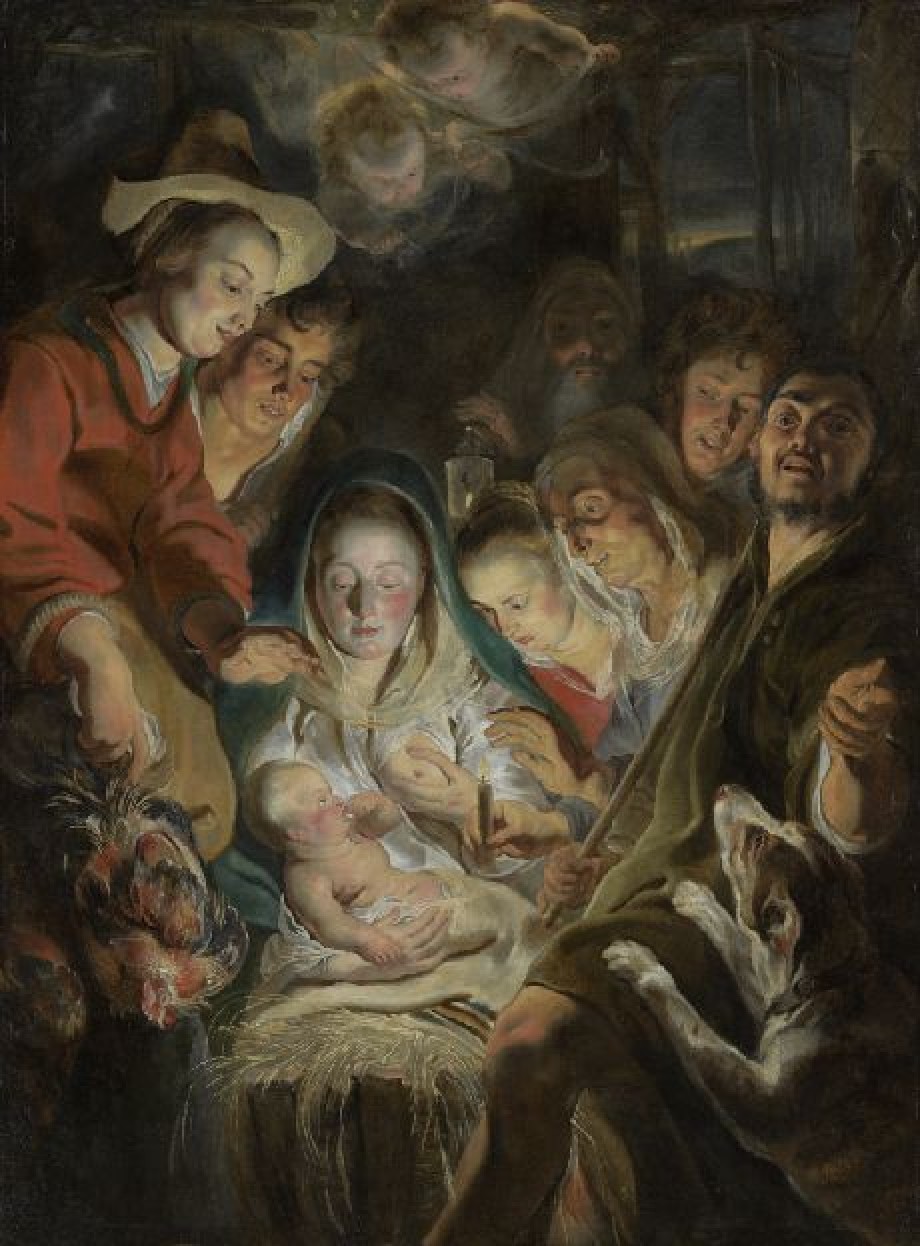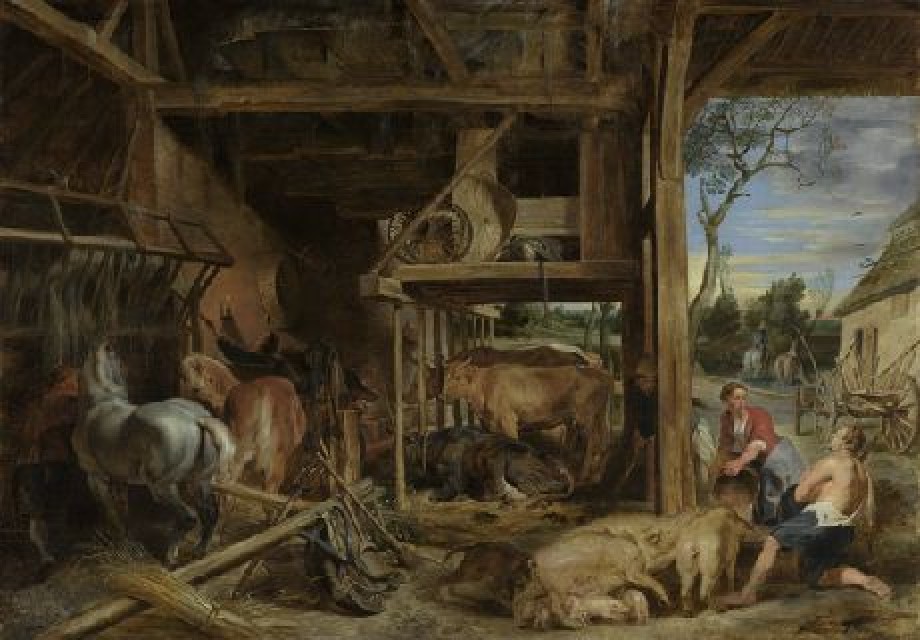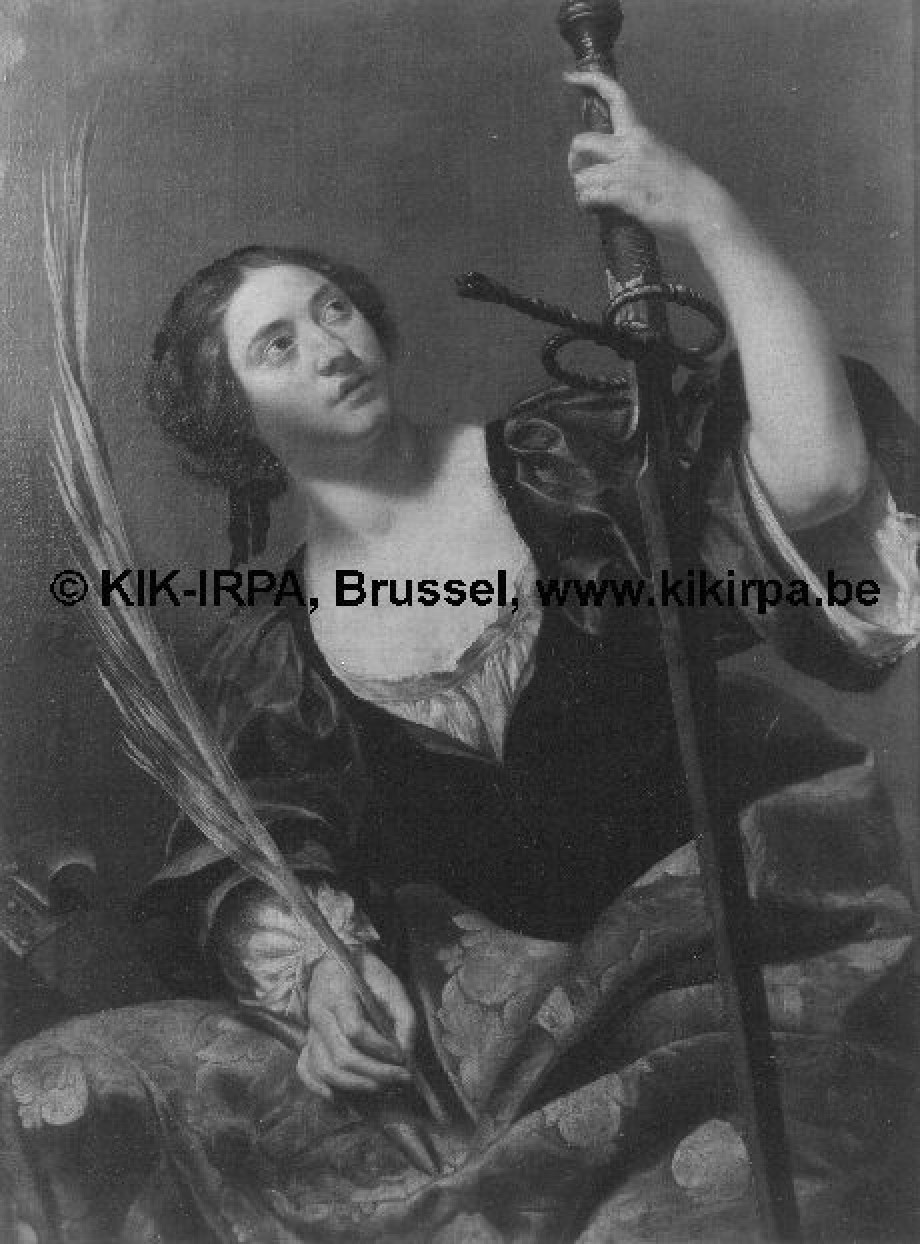The Martyrdom of Saint Apollonia

Artist / maker
Jacques Jordaens (painter)Date
(1628)Period
17 centuryCollection
Royal Museum of Fine Arts Antwerp
Kneeling to the right of centre is Apollonia, a saint who was martyred in the year 214. Her story is told in the Legenda aurea (Golden legend), a collection of saints’ lives that was also used as the guide for this painting. Apollonia rejected the urging of a Roman priest, the man on the right, to pray before the image…
Read more
Kneeling to the right of centre is Apollonia, a saint who was martyred in the year 214. Her story is told in the Legenda aurea (Golden legend), a collection of saints’ lives that was also used as the guide for this painting. Apollonia rejected the urging of a Roman priest, the man on the right, to pray before the image of a heathen god, seen at top left. Her punishment was gruesome. An executioner, the man nude to the waist, pulled out all her teeth, which is why Apollonia is the patron saint invoked against toothache. He then threatened to throw her on a pile of wood if she refused to pray before the image. She, however, remained true to Christ and chose fearlessly to be burned alive. A heavenly light descends upon her. At the top the Virgin Mary is awaiting her with a wreath and a palm frond, the reward for her martyr’s death.
This altarpiece was made for the Augustinian church in Antwerp. It was one of the many commissions that took place within the context of the Counter-Reformation. Protestantism had flourished in the city in the previous century, unleashing the Iconoclasm and a bloody religious conflict. When Catholic Spain recaptured Antwerp in 1585 the authorities ordered that the churches be filled with art once again. The history of the Antwerp Augustinians during the religious troubles is an unusual one. Martin Luther was an Augustinian monk, so the brothers of his order were initially sympathetic to the Reformation, but they paid a heavy price for it. They were banished on the orders of Emperor Charles V and their services prohibited. In 1608, through the mediation of Archdukes Albrecht and Isabella, they were given permission to found a new monastery in Antwerp, and from now on the order resolutely swore loyalty to the Church of Rome.
Between 1615 and 1618 the Augustinians built a new church in Kammenstraat, and in 1628 three altarpieces were ordered for it. Peter Paul Rubens delivered a Madonna and saints for the high altar, while side altars received Jordaens’s Apollonia and St Augustine of Hippo by Anthony van Dyck.
The subjects of those altarpieces had a special significance for the Augustinians. St Augustine of Hippo was the founder of the order, and relics of Apollonia were kept in the church. Rubens depicted the Virgin and a crowd of saints in the centre of his altarpiece, because the church was dedicated to the Virgin and all saints. The two saints singled out on the side altars reappear on the high altar, Apollonia standing on the left holding tongs and Augustine in the foreground with a fiery heart. The pair of them symbolise the two paths to sainthood: monastic devotion and martyrdom. The choice of the three artists was striking. They were the great masters of their age, and the younger ones who were selected for the side altars had previously worked for the painter of the high altarpiece.
Jordaens was efficient in his preparation for this monumental work. He made a modello in gouache that is now in the printroom of the City of Antwerp. He made life studies for some of the details, and may have borrowed some ideas from Rubens. It used to be said that Rubens wanted to paint the entire commission himself, but because he had to go on a diplomatic mission to Spain in 1628 he passed the side altars on to his two former assistants.
Read less











